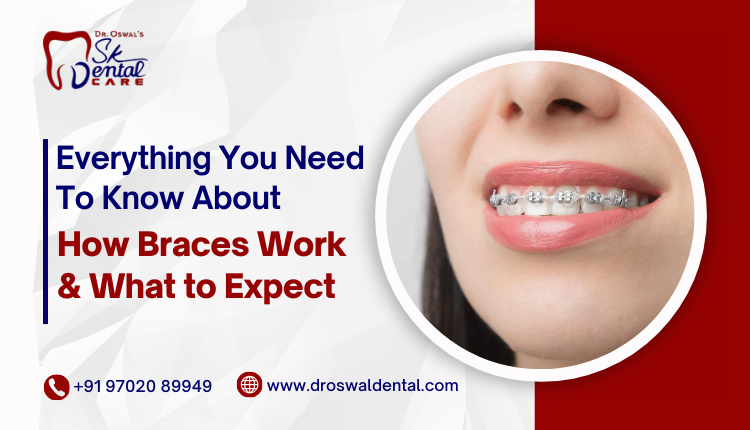
Let’s face it—getting braces is a big step. Whether you're considering them for yourself or your child, the idea can feel a bit overwhelming at first. Wires, brackets, appointments… what does it all mean?
The good news? Braces have come a long way in recent years, and they’re not nearly as scary or uncomfortable as you might imagine. In fact, they can transform your smile and improve your oral health in the long run. So, let’s break it down—how braces actually work and what you can expect from start to finish.
Braces are like gentle guides that slowly move your teeth into the right positions. They use pressure applied over time to shift teeth that are crooked, crowded, or have too much space between them. Braces also help fix bite issues like underbite, overbite, or crossbite.
The entire system works together to apply this pressure in a controlled manner. Think of it as a slow and steady push in the right direction.
Here’s a quick breakdown of what goes into the setup:
Brackets: These are small square pieces attached to each tooth and act like anchors.
Archwire: The wire that connects all the brackets and gently pulls the teeth into place.
Bands or Rings: Sometimes used around back teeth to provide extra support.
Elastics (Rubber Bands): These are used for bite correction and may be attached in different ways depending on what needs fixing.
Spacers: Used before getting braces to make room between your teeth if needed.
When you walk in for your first appointment, don’t expect the braces to go on immediately. Here’s what usually happens first:
An exam to assess your teeth and jaw.
X-rays and impressions (molds) to get the full picture.
A discussion about your treatment plan—what type of braces, how long it’ll take, and what results you can expect.
If everything looks good, the orthodontist will book another visit to place the braces.
Getting braces doesn’t hurt, but it does take a little time, usually about 1 to 2 hours. The process includes:
Cleaning and drying your teeth
Sticking the brackets with dental glue
Attaching the archwire and securing it with bands
You might feel a bit of pressure when the wire goes in, but it’s manageable. Your mouth may feel sore for a couple of days after, especially when chewing. Soft foods and a cold compress can help during this phase.
Brushing and flossing become even more important once you have braces. Food can get stuck more easily, and plaque loves to hide around the brackets. Your dentist will guide you on how to clean properly (yes, there are special brushes too!).
Some foods will be off-limits for a while. Hard candies, popcorn, gum, and anything super sticky are a no-go. They can damage your braces and delay your progress.
You’ll also have regular follow-ups, usually every 4 to 6 weeks, for adjustments.
It depends on your individual case, but most people wear braces for 12 to 24 months. Some minor cases can wrap up sooner, and more complex ones may take a bit longer.
Patience is key. Your smile didn’t shift overnight, so it’ll take a little time to guide it back.
When your braces finally come off, you’ll get to see your beautiful, straight smile—and trust us, it’s worth the wait.
But the journey isn’t completely over. Most people need to wear a retainer afterward to keep their teeth in place and prevent them from shifting back.
We understand that every smile is unique. That’s why we tailor each braces treatment plan to your needs, age, and lifestyle. If you're exploring options for braces treatment in Panvel, visit Dr. Oswal’s SK Dental Care Clinic—a trusted name for advanced orthodontic care.
Book your appointment today to begin your journey with the most reliable braces treatment in Panvel. Your smile deserves the best!